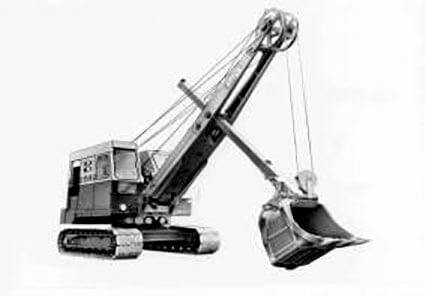1960
Liberalization of trade brought Japan demand from abroad and the opportunity to raise Japan's technological advancements to a world-class level. The introduction of large-scale power sources took place, which accelerated development of larger equipment.

This model was an upgrade from the 22B and included an air operation system, more durability with a bulldozer track and an improved ride with a deluxe cab, etc.
However, the demand for hydraulic shovels that were being manufactured by Mitsubishi Heavy Industries increased dramatically, and this mechanical shovel was discontinued in 1971.
Weight: 25230kg, Dipper capacity: 0.8m3
Hydraulic excavator
Since its first emergence in 1951, it took only 50 years for the hydraulic shovel to establish its primary position on construction sites worldwide. Its size ranges from mini to super size depending on the scale of construction, and during the half century, it kept evolving by achieving a minimum rear-swing radius and adapting styles that would work with characteristics of each site. Mirroring the movement of a human hand, a hydraulic shovel will continue to evolve during the 21st century.